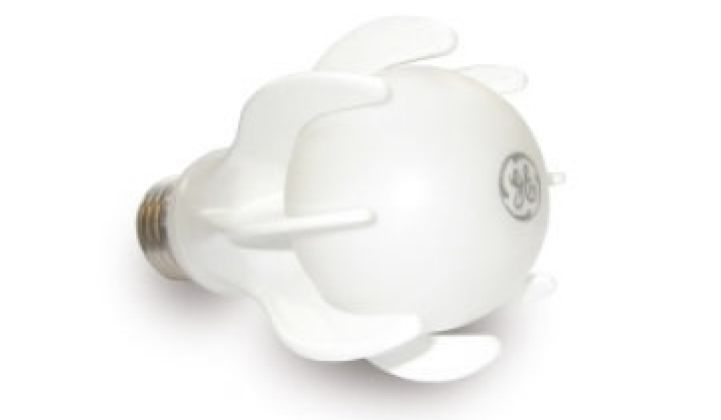The first, and still one of the biggest, light bulb maker in the world is going digital.
General Electric today showed off a LED light bulb that will fit into a regular light socket but consume far less power than an incandescent bulb. The Smart Energy LED bulb will put out about the same amount of light as a 40-watt incandescent, but will only consume 9 watts. The bulb is comparable to a 10-watt compact fluorescent in efficiency, but will last much longer than a CFL and forgo less-than-desirable components like mercury. It will last 25,000 hours, or three times as long as a CFL and 25 times longer than an incandescent.
But it won't be cheap, at least not right away. The bulb will cost $40 to $50 when it hits store shelves later this year or early next year. That makes it comparable to the LED bulbs released last year by Lemnis Lighting. GE, however, wields enormous mass manufacturing capabilities that will likely lower the price.
Cree will supply the LEDs -- the chips inside the bulb that produce light -- to GE. GE will show the bulbs off at Lightfair in Las Vegas, the industry's big confab taking place May 12 through 14.
Regulations, declining prices and the improved quality of LED bulbs are ushering in an era of solid-state lighting. Australia has already imposed regulations that effectively ban incandescent bulbs and the European Union will follow suit in 2012. The U.S. has imposed efficiency regulations that will ultimately push the incandescent to the margins by 2014. Canada, the Philippines, and others have similar plans. Despite some strong objections, incandescents in all likelihood will fade away. And for good reason. Incandescents only use five percent of the energy put into them to make light. The rest gets turned into heat -- that's why Easy-Bake Ovens work.
Thomas Edison, GE's founder, invented the most common incandescent model used today. He first showed it off in 1879.
Like GE, Philips, Osram, Toshiba, Panasonic and startups like Bridgelux and Renaissance Lighting hope to capitalize on these trends by readying LED bulbs for offices and homes. Expect to see more activity for offices first. Because they last longer, LEDs don't need to be replaced as often, which reduces maintenance costs. Thus, the payoff is likely to be quicker for commercial users.
Another benefit: colors. Osram will add color accents to home lights for an added aesthetic effect.
Along with bulb makers, companies like Redwood Systems and Adura Technologies are creating networking systems to automatically control lights and thereby save energy. All those lights you see twinkling in a picturesque urban skyline at night? Typically, no one is even occupying most of those offices. Lighting consumes 22 percent of the electricity in the U.S. -- and a lot of it gets wasted.
Expect to see relentless acquisition activity in the $100-billion lighting space in the years ahead. Philips has already spent billions acquiring solid-state lighting companies.



